This environmentally-friendly project has achieved a drastic reduction in light pollution with energy savings of 89%
PAMPLONA —23/12/2020— The Pamplona Town Hall recently completed the renewal of the outdoor lighting in Yamaguchi Park, a Japanese garden covering 85,000 square meters located in Ermitagaña neighborhood. This unique green space, designed in 1997 by Japanese landscapers as an allegory of the four seasons, takes its name from the city of Yamaguchi, near Hiroshima, which was evangelized by the patron saint of Navarre, St. Francis Xavier. The city has also been twinned with Pamplona since 1980.
In addition to its particular setting, this park is known for being the venue for the Pamplona Planetarium, a scientific dissemination institution renowned for its intense educational and exhibition activity. The Planetarium is clearly committed to protecting the natural darkness of the night sky, and channels its efforts through projects such as Pirineos La Nuit, in the propose different methods to mitigate light pollution and achieve dark sky friendly outdoor lighting.
Project needs and objectives
When visiting Yamaguchi park, one could observe an old-fashioned outdoor lighting installation consisting of discontinued 150 W metal-halide luminaires, with a high annual energy consumption (72 059 kW⋅h/year), high upper light output ratio (ULOR) and glare, and poor luminous efficiency, a far cry from the performance that LED technology can offer today.
The Town Hall wanted to renew this installation and provide the park with lighting that, while maintaining a high color rendering index, would improve uniformity, drastically reduce energy consumption by emitting the amount of light needed and where required, and eliminate upper light output ratio to help mitigate light pollution in the vicinity of the Planetarium. In this respect, an ULORinst value of 0 % was set as a requirement. At the same time, in order to further limit consumption, a proposal was put forward to integrate a system with a time profile that would decrease power during the interval with the lowest flow of people.
On the other hand, as the town planning technician points out, the aim was to reduce glare and the visual discomfort produced by the metal-halide luminaires, as well as to warm up the color temperature, which would contribute to creating a cozy and relaxed atmosphere more in keeping with a recreational area of this type.
Fernando Jáuregui, head of audiovisual production and pedagogy at the Pamplona Planetarium, and coordinator of the European Pirineos La Nuit project, also advocated the use of more efficient lighting technology with greater visual comfort in order to improve the general feeling of pedestrians walking around and through the park.
Solution
After analyzing the different project needs, the solution chosen was Evolución P LED, by ATP Lighting, in a ultra-warm color temperature of 2200 K, and equipped with a flat safety glass diffuser to ensure an ULORinst value of 0 %, as required.
A total of 98 luminaires (95 adjusted to 23 W and three to 52 W) were installed with optics specially adapted to the spacing and height of the existing columns, since all the previous poles were being kept. In order to achieve maximum uniformity with this arrangement, different types of asymmetrical optics were combined with symmetrical ones, which made it possible to effectively cover the area to be illuminated. Finally, the luminaires were installed with a time profile integrated into the driver, which reduces the power by 30 % between 12 AM and 5 AM.
In an environment affected by abundant rainfall, these totally hermetic luminaires and the immunity to corrosion of the engineering technopolymers that make up their enclosures were a decisive advantage in the project. The investment is also protected by the comprehensive 10-year product warranty.
Results
The replacement of the 150 W HM luminaires by ATP's 2200 K LED Evolución P solution, together with the inclusion of the power reduction time profile, has made it possible to achieve energy savings of over 89 %, from 72,059 kW⋅h/year to 7,900 kW⋅h/year.
In addition, the combination of a 0 % ULORinst value with a color temperature of 2200 K, whose spectral radiant flux below a 440 nm wavelength is only 1.3 %, has led to a very significant reduction in the environmental impact compared to the previous installation. Similarly, thanks to a luminaire design in accordance with the scenario and a suitable choice of optics, an average uniformity of 0.625 has been achieved, more than double that required by the Regulation on energy efficiency in outdoor lighting installations for walkways. Finally, as required by the project, a high color rendering index of over 70 has been preserved.
The Pamplona Planetarium has highlighted the environmental achievements of this action and has singled it out as a model for efficient, aesthetic lighting adapted to the needs of its surroundings.
Technology: LED | CCT: 2200 K | Power: 95 luminaires adjusted to 23 W and three to 52 W | ULOR: 0 % | CRI: >70 | Average Uniformity: 62.5 % | Energy savings: 89 %
Press contact:
Julio Aparicio
ATP Lighting
comunicacion@atpiluminacion.com
Copyright © 2016 ATP Lighting Inc. All rights reserved. ATP Lighting, the ATP Lighting logo and all trade names listed on this website with the ® symbol are registered trademarks of ATP Lighting.


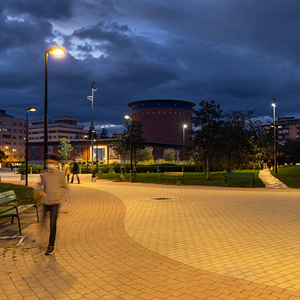
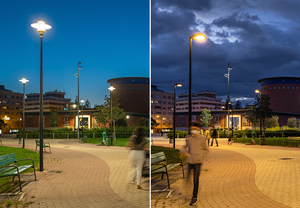
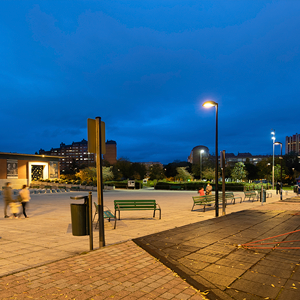
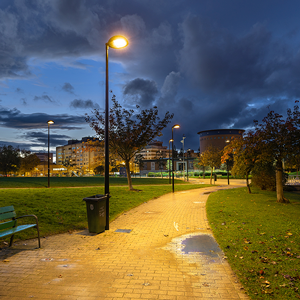
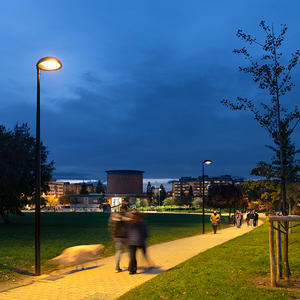
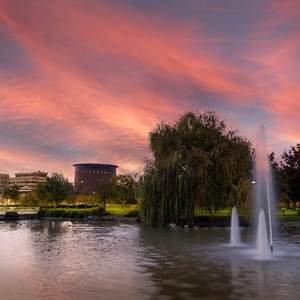
![[...]](https://www.atpiluminacion.com/xtra/imgs/loading.gif)